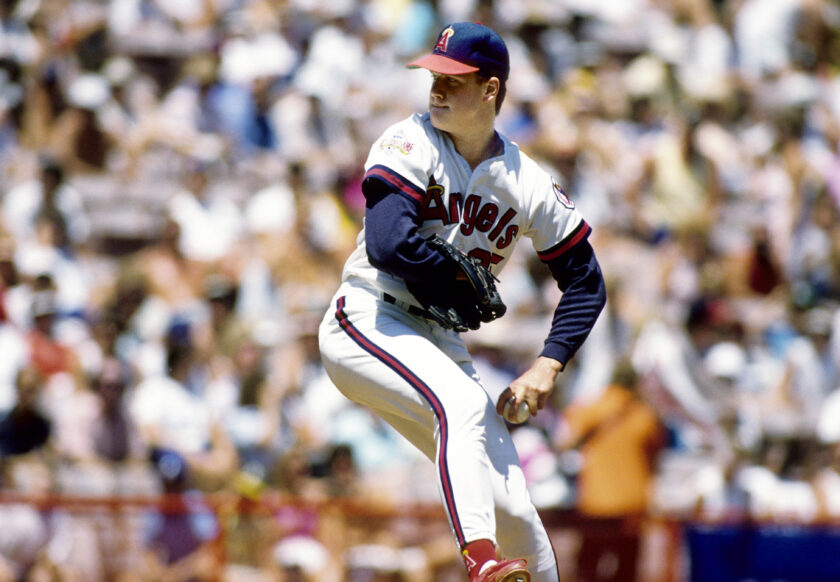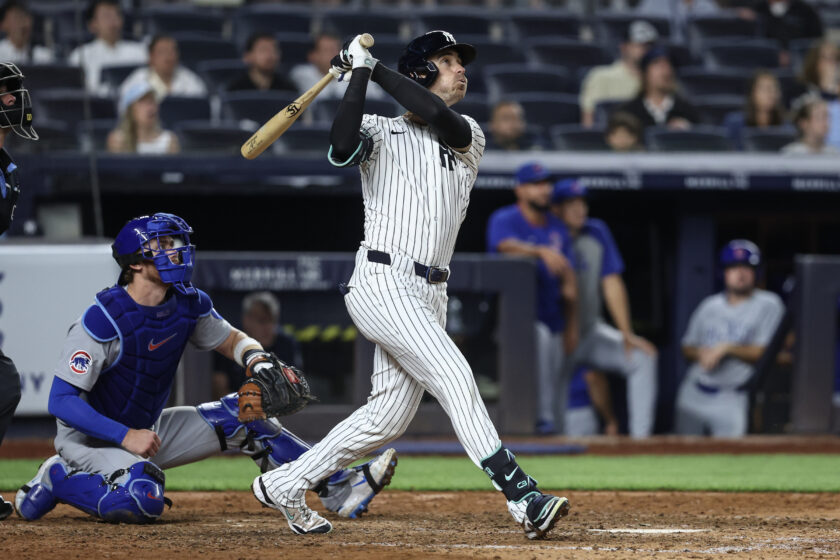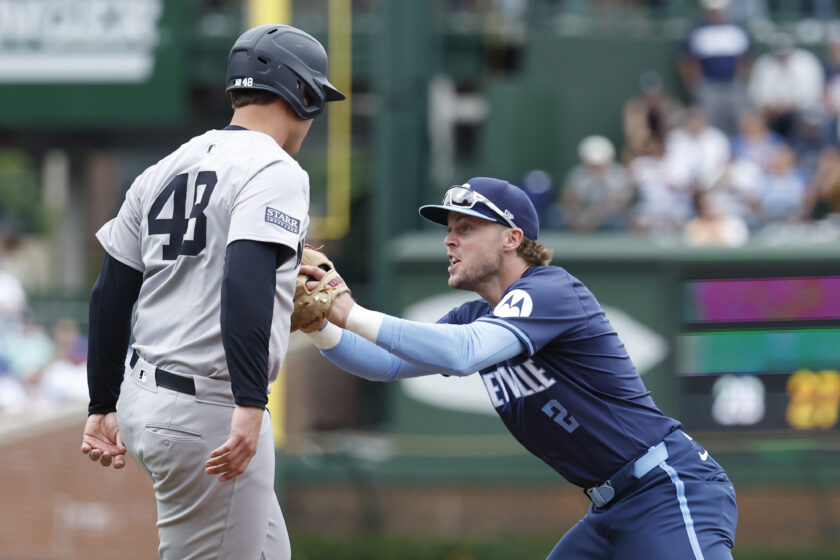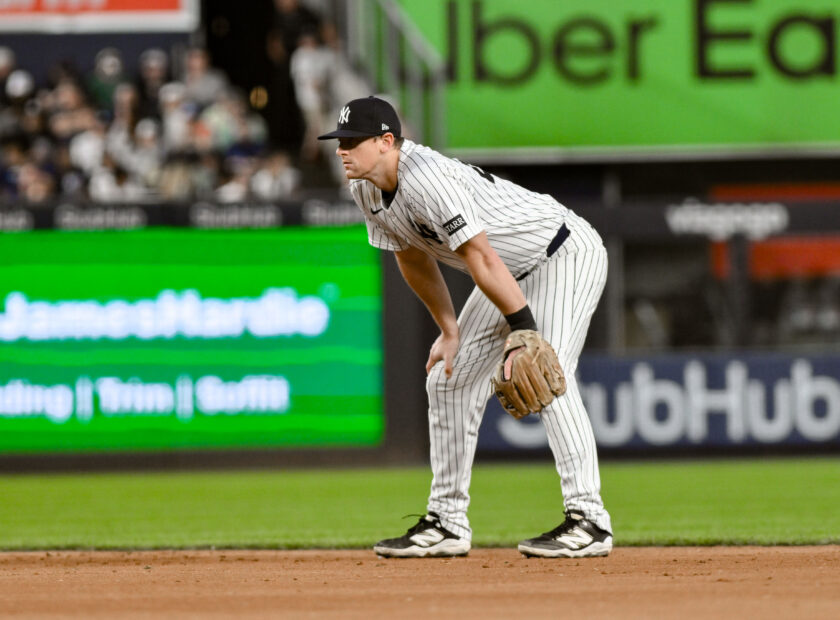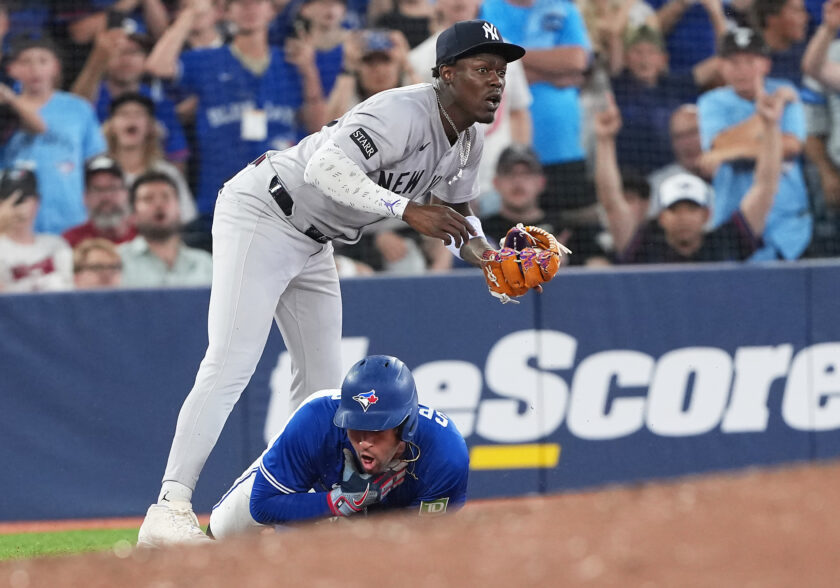New York Yankees: J.A. Happ trade draws interesting parallels to David Cone

J.A. Happ draws an interesting comparison to another former New York Yankees pitcher that just so happened to play for the Blue Jays as well.
J.A. Happ has only been a New York Yankee for a few days, but the deal that brought him to the Bronx is already drawing a comparison to another deadline deal the team made some time ago. This deal was also with Happ’s former team, the Toronto Blue Jays, and the man acquired made his Yankees debut 23 years to the day of Happ making his first appearance in pinstripes.
The deal, of course, is the one that brought right-handed ace David Cone to New York on July 28, 1995. Much like the trade for Happ, the Yankees acquired Cone with the hope he could help close the gap between New York and the Boston Red Sox in a hot race for the AL East crown.
Granted, the differences between both deals are notable, but just how much trading for Happ is reminiscent of the Cone deal is hard to ignore.
More importantly, however, will this deal yield the same results?
[sc name=”Yankees Title” text=”Revisiting Cone” ]
Before we dive into Happ, we must first understand the Cone trade inside and out.
The veteran righty was 32 when he made his Yankee debut against the Minnesota Twins at the Metrodome on July 29, and owned a record of 9-6 with a 3.38 ERA. The deal was not only necessary to help the Yankees to stay in the playoff race, but also because lefty ace Jimmy Key was out for the season with a serious shoulder injury.
Ironically, like Cone, Key was also a former Blue Jay, though he came to New York as a free agent prior to the 1993 season.
[sc name=”Yankees Center”]Cone certainly answered the bell, and then some. He tossed eight innings of two-run ball and struck out nine in a 4-2 victory. He went on to go 9-2 with a 3.82 ERA the rest of that season, as the Yankees went on to win the first-ever AL Wild Card. They lost the ALDS to the Seattle Mariners in five games, but Cone was 1-0 with a 4.60 ERA in two postseason starts. He re-signed with the team that offseason and spent five more years with the Yankees, winning 20 games in 1998 and winning four World Series rings. Cone also threw a perfect game in 1999, further cementing his place in Yankees lore.
The best part? The Yankees gave up practically nothing for Cone. The Blue Jays acquired three minor league pitchers from New York and only one of them, Marty Janzen, saw time on the MLB level in parts of two seasons with Toronto. The deal was a win for the Yankees, much like the trade for Happ could be today.
[sc name=”Yankees Title” text=”Happ the Yankee” ]
Now, on the eye-test alone, Happ is more similar to Key than he is to Cone if only because he’s left-handed. The real Cone similarities come in that Happ, as Cone has described himself when he first joined the team, is a hired gun.
New York brought him aboard to help a starting rotation that desperately needed help at the back end, what with Sonny Gray and Domingo German proving inconsistent and Jordan Montgomery recovering from Tommy John surgery. The Yankees did the exact same thing in acquiring Cone, as a viable big-game ace was needed in Key’s absence. Cone being the reigning AL Cy Young-winner was also an added bonus.
Happ, like Cone, also had a very successful Yankees debut. The 6’5″ southpaw allowed one run on three hits in six innings of work, picking up the win in New York’s 6-3 victory over the Kansas City Royals.
With the Boston Red Sox not showing any signs of slowing down, the Yankees are hopeful Happ can help them maintain momentum and their winning ways en route to a second consecutive playoff berth.
[sc name=”Yankees Title” text=”Key differences” ]
However, there are still some differences between both deals.
While New York gave up little in acquiring Cone, the team gave the Blue Jays a bit more 23 years later. Toronto acquired infielder Brandon Drury and outfield prospect Billy McKinney from the Yankees, far from three pitching prospects that never quite amounted to anything. Drury is a proven MLB talent who only toiled in the minors this year because an injury allowed Miguel Andujar to take over starting third baseman duties. McKinney is a talented outfield prospect whose developing bat could prove a boon to a rebuilding Toronto team.
Not only that but while re-signing Cone was clearly a goal for the Yankees after the ’95 season, re-signing J.A. Happ after 2018 does not appear to be in the cards. New York could have as many as four rotation spots spoken for if CC Sabathia decides to come back next year and the interest is mutual, top prospect Justus Sheffield could also be in the rotation. There is also Montgomery’s return to consider, plus German.
Thus, unless manager Aaron Boone decides to use a six-man rotation, Happ will probably never move past Cone’s status in 1995: a hired gun brought in for a late-season push.
Final thoughts
The reality of the matter is while the J.A. Happ and David Cone trades do certainly have some similarities, digging a little deeper proves they’re actually quite different. Though Cone was acquired as an expiring contract, New York was playing the long game in that deal since the rotation was basically rebuilt from the ground up the following year and over the next few seasons.
This time around, the Yankees have some more solid pitching pieces in place for the foreseeable future. That means Happ will probably pitch in pinstripes for a few months and then sign a new deal elsewhere this winter, and that’s not at all a bad thing.
That said, the J.A. Happ trade could wind up being more similar to when the Yankees traded Aroldis Chapman to the Chicago Cubs, who rode his arm (and others) to a World Series ring before not even extending him a qualifying offer in the offseason. Another deal that comes to mind is the Los Angeles Dodgers trading for Yu Darvish last year, though he proved ineffective when it counted.
The point is J.A. Happ and David Cone draw some interesting parallels between each other, especially 23 years apart. However, talented though the lefty Happ is, the game and team-changing starboard sider he certainly is not.
[sc name=”Yankees Link Next” link=”https://elitesportsny.com/2018/07/29/new-york-yankees-officially-time-worried-about-luis-severino/” text=”It’s Officially Time To Be Worried About Luis Severino” ] [sc name=”Yankees Footer”]Josh Benjamin has been a staff writer at ESNY since 2018. He has had opinions about everything, especially the Yankees and Knicks. He co-hosts the “Bleacher Creatures” podcast and is always looking for new pieces of sports history to uncover, usually with a Yankee Tavern chicken parm sub in hand.

